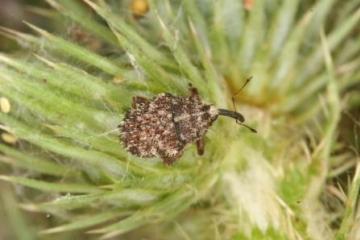Species Account for Trichosirocalus horridus
PLEASE NOTE, many records in this group are not yet available
Trichosirocalus horridus (Panzer, 1801)
Coleoptera: Curculionidae

Reproduction for study and non-profit use permitted, all other rights reserved.
Taxonomic group: beetles (Coleoptera) - Available county data
View time series maps for Trichosirocalus horridus
member log-on for taxon report
Status: Na
Essex RDB: Listed
Images
upload a new image
Essex Red Data List comment
Essex 1950-1969 record/s; VC18 pre-1970 record/s.
Species text
This small reddish weevil is very local and in Hymans & Parson (1992) had recently been recorded from only four vice-counties, all in southern England. Old records show that this species has been more widely recorded in England and noted as far north as Fife, Scotland. The beetle occurs on disturbed ground and woodland rides. It is phytophagous, associated with spear thistle Cirsium vulgare and musk thistle Carduus nutans, and probably occasionally on other species of thistle. This species is probably threatened by loss of habitat through development and improvement, and conversion to arable agriculture. Natural succession may also have contributed to this species decline. Disturbance, such as rotovation, on a rotational basis, is needed to maintain open conditions and encourage early successional stages (Hyman & Parsons, op. cit.). References
Habitats
Recorded management for locations with Trichosirocalus horridus
Recorded substrate and hydrology for locations with Trichosirocalus horridus
Why not join the Club, register and add a new species page
Interpretation of distribution maps



















